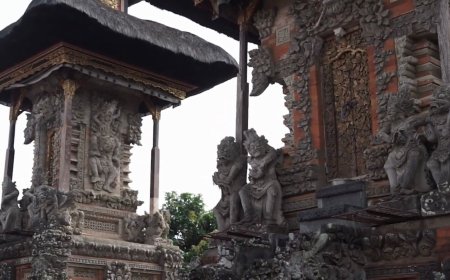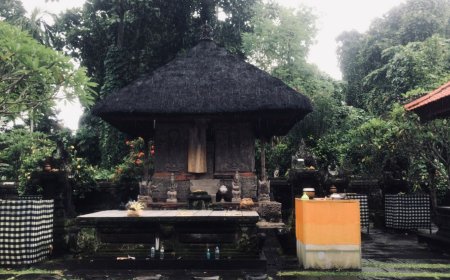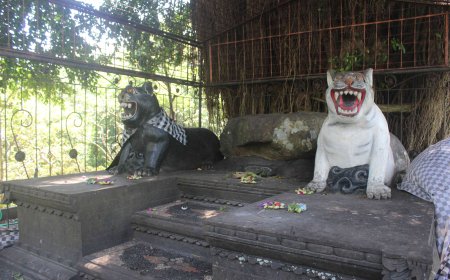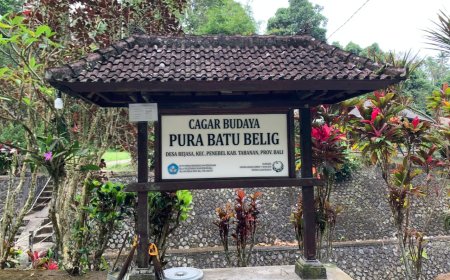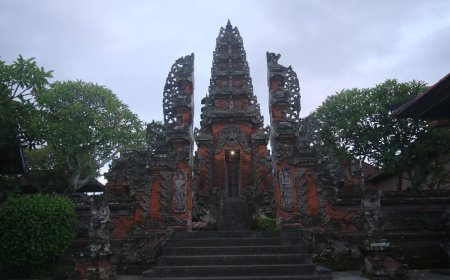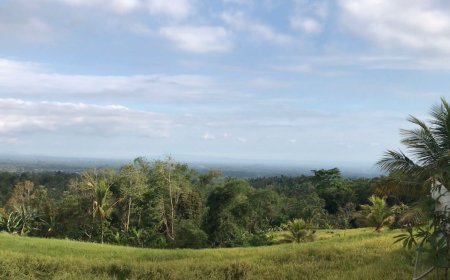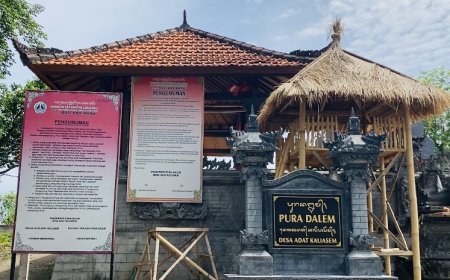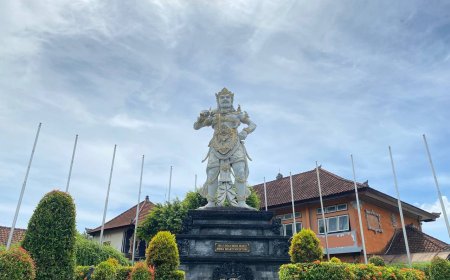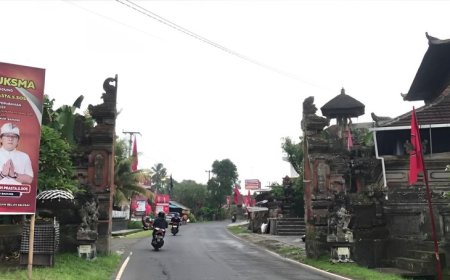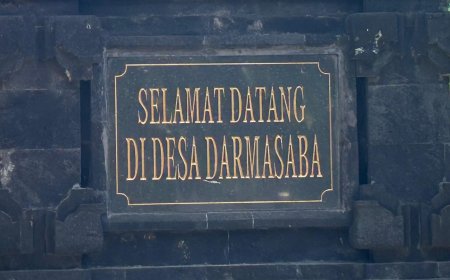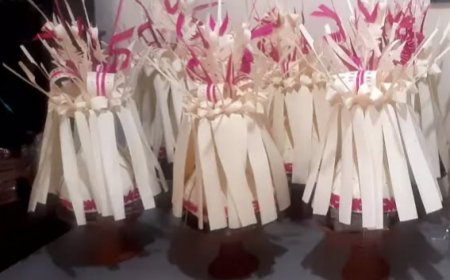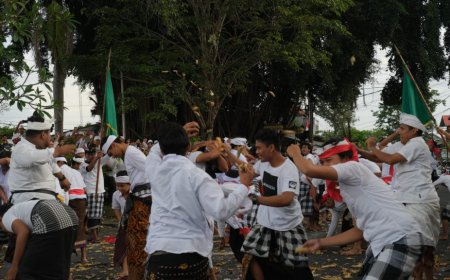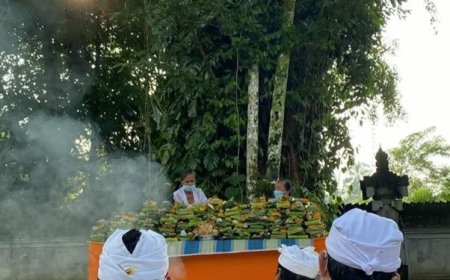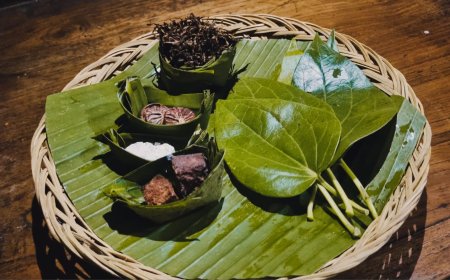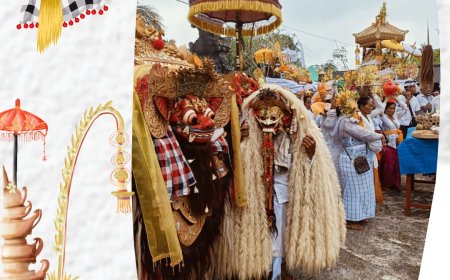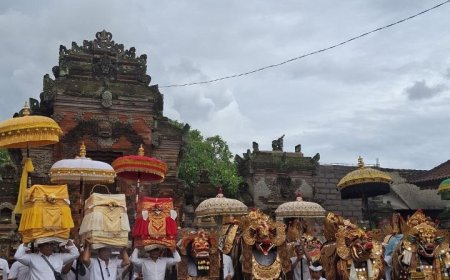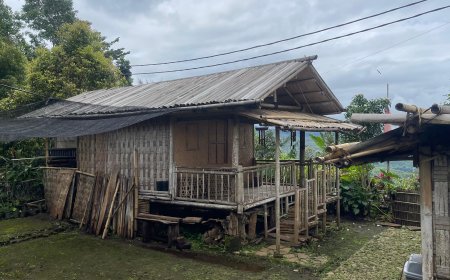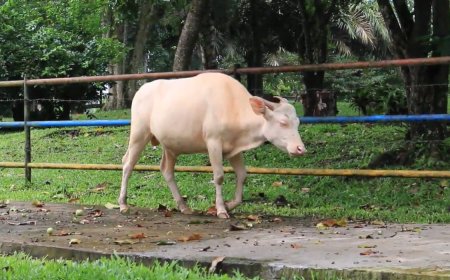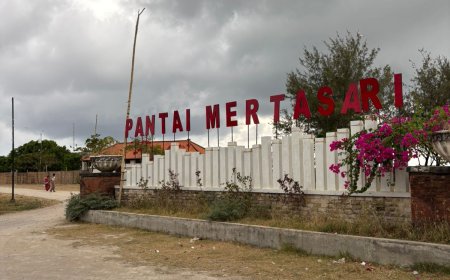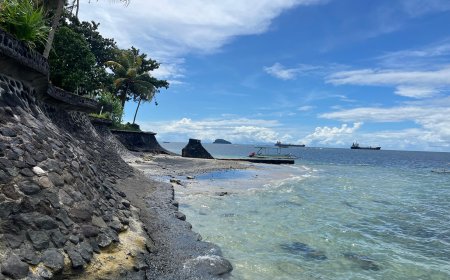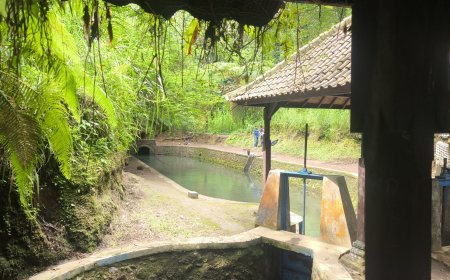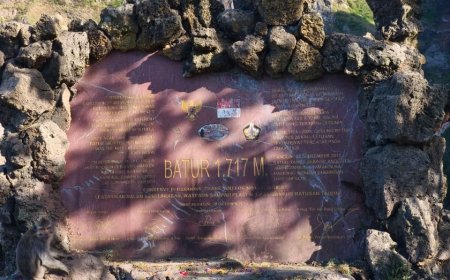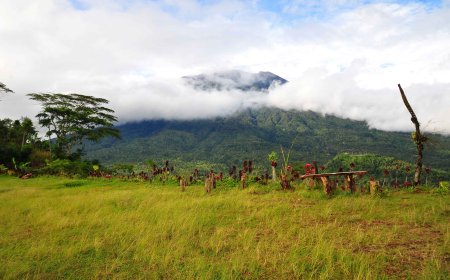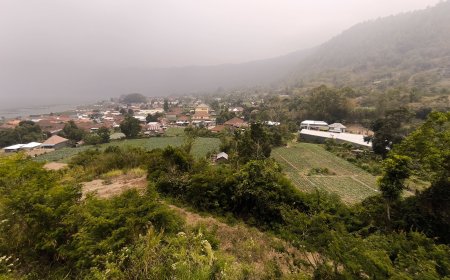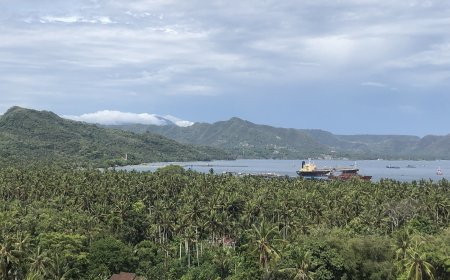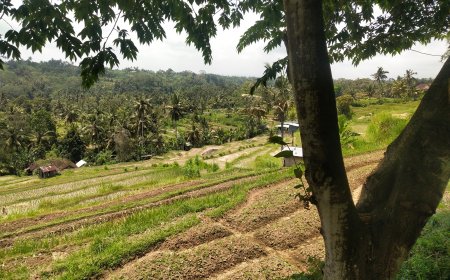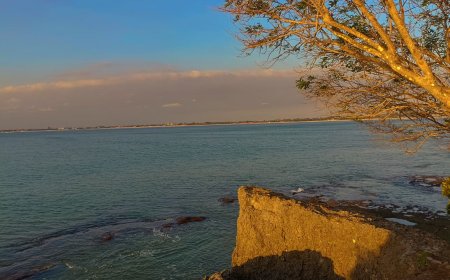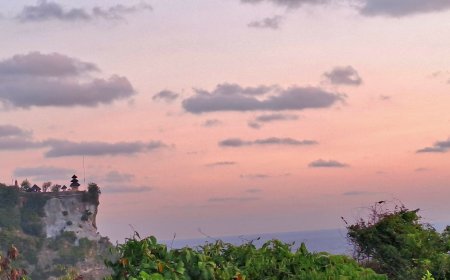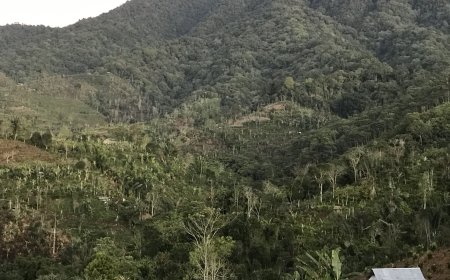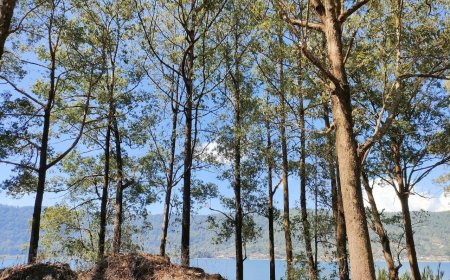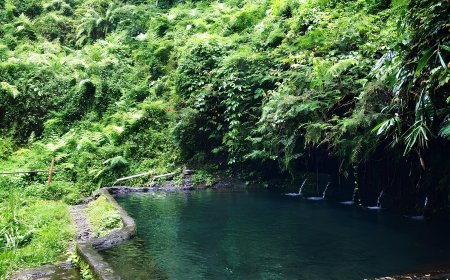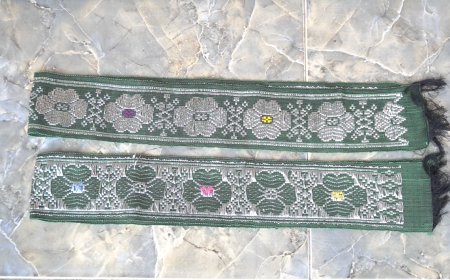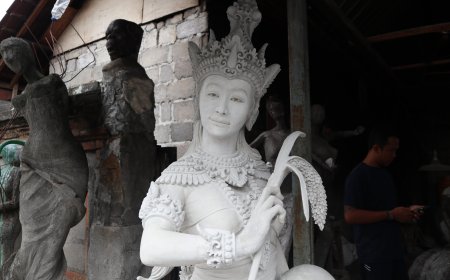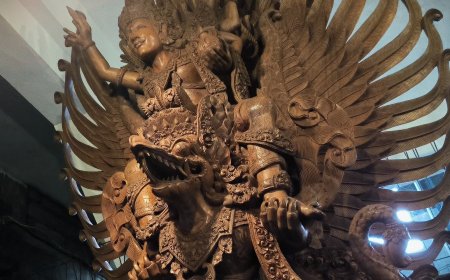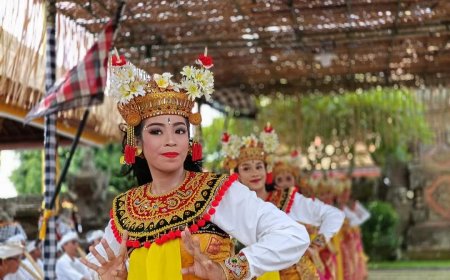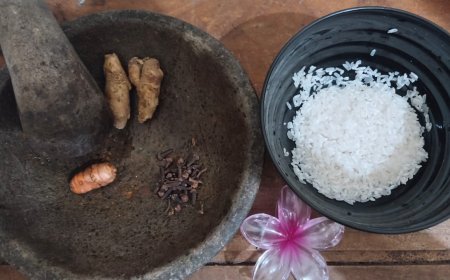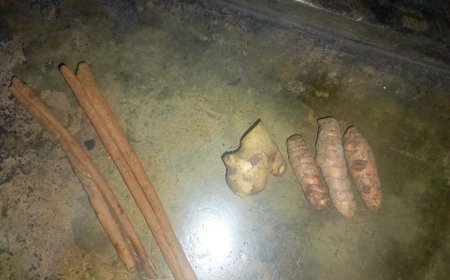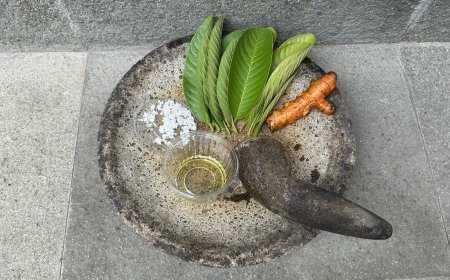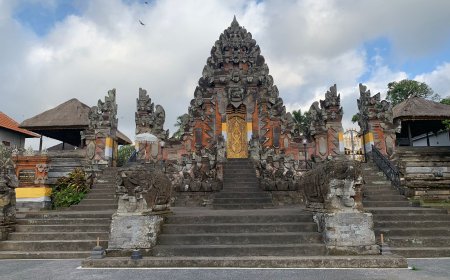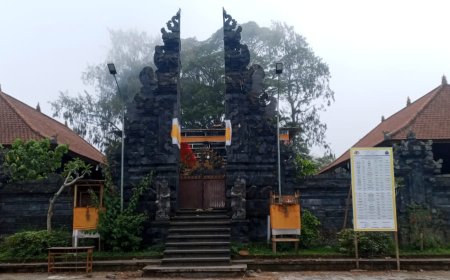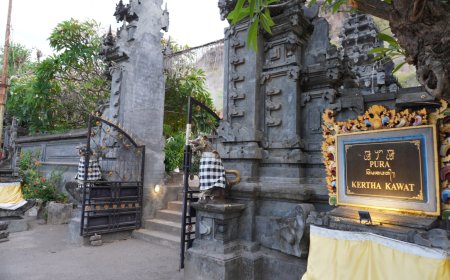The Majesty of Bukit Gumang Temple: Harmony of Nature and Spirituality
Perched atop a barren hill, Bukit Gumang Temple exudes a majestic presence that blends seamlessly with nature. Surrounded by trees and shrubs, this temple offers profound spiritual tranquility. The presence of wild monkey troops in the area enhances the natural ambiance, making each visit a deeply meaningful journey.
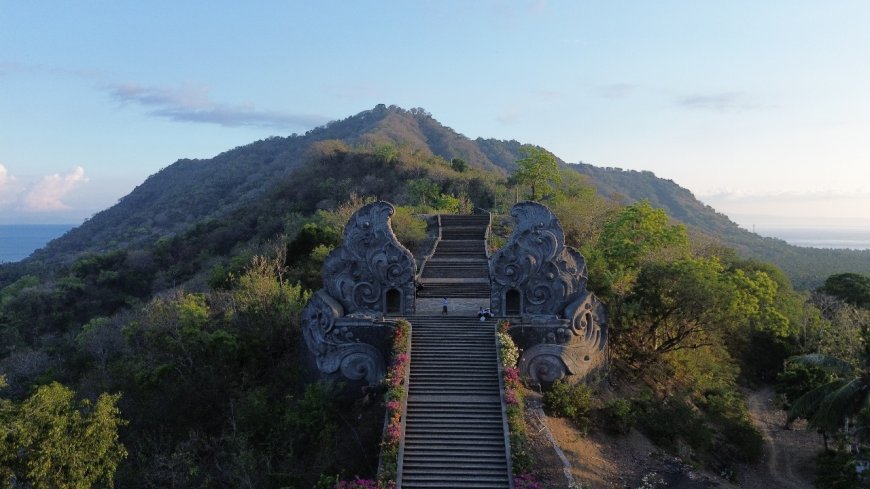
Bali offers a variety of captivating tourist destinations. Beyond the enchanting natural beauty of Karangasem, the island is also renowned as the "Island of a Thousand Temples" due to the numerous temples scattered across its regions. One that stands out is Bukit Gumang Temple, also known as Bukit Batu Kursi Temple. Situated on elevated terrain with breathtaking mountain views, this temple showcases extraordinary natural beauty. Bukit Gumang Temple is not only a revered sacred place but also a popular tourist destination, where visitors come not only to worship but also to enjoy the scenery and experience the local cultural atmosphere.
Bukit Gumang Temple in Karangasem, Bali, is a sacred site that offers stunning natural beauty and a deeply spiritual atmosphere. Located on high ground with a breathtaking mountain backdrop, the temple provides a sense of peace and tranquility that is hard to find elsewhere. The surrounding natural beauty, complemented by fresh air and expansive green landscapes, makes Bukit Gumang Temple not only a revered place of worship for Hindus but also an appealing destination for tourists seeking serenity while enjoying the charm of Bali's nature.
The Beauty of Bukit Gumang Temple from the Hilltop (Source: Personal Collection)
Bukit Gumang Temple is located in Pekraman Bugbug Village, Karangasem Regency. The temple sits atop Bukit Gumang or Bukit Juru, a barren hill rising approximately 279 meters above sea level. To reach it, visitors must climb the hillside from the winding main road in the Sanghyang Ambu area. The hill is home to many wild monkeys that inhabit the temple grounds. According to local lore, the area, which was once densely forested, was also home to a herd of wild cattle known as Sampi Gumang. However, these cattle are no longer present, while the wild monkeys, known as Bojog Gumang, remain. Traditionally, Bukit Gumang Temple is jointly maintained by five villages: Bugbug, Bebandem, Datah, Jasri, and Ngis. To reach the temple from the main road, visitors must cross three hill ridges. This journey involves traversing a rocky footpath and several flights of stairs, flanked by trees and shrubs typical of vegetation found in arid regions.
The Beauty of the Layout of Bukit Gumang Temple (Source: Personal Collection)
In the western section, there is the pelinggih Gaduh Maprucut, the shrine of Betara Gede Gumang, also known as pelinggih Gaduh Pakan Lanang. Additionally, there are three pelinggih bebaturan capah, which serve as places for the worship of spiritual energies (taksu-taksu). In the slightly elevated southern area, there is a Bale Agung, used for offering ceremonial offerings (banten), as well as a water source for ritual purposes.
In the central section, stretching from north to south, stands a three-tiered structure serving as the shrine of Betara Tri Purusa. To its south are the sesaka pillars, which support the Bale Panggungan, a structure used as the shrine for Ida Betara from the villages of Bugbug, Bebandem, Jasri, Datah, and Ngis during the odalan ceremonies. Further south in this area lies the pelinggih Gaduh Rong Kalih, the shrine of Bhatara Ayu Lulut, Betara Ayu Mandasar, and Betara Ayu Mas, collectively known as pelinggih Gaduh Pakan Istri. This pelinggih is surrounded by three bebaturan capah, which serve as places for the taksu-taksu.
In the eastern section, stretching from north to south, stands the pelinggih Sanggar Agung, which serves as the shrine of Hyang Widhi in His manifestation as Sanghyang Manik Anrawang or Sanghyang Mahesora. To its south lies the Bale Lantang and Bale Pawaregan, and further south is another Bale Lantang, which functions as a preparation area (paebatan).
On the outer section, along the ridge of Bukit Gumang beyond the Candi Bentar gate, there are pelinggih bebaturan capah serving as shrines for the taksu-taksu. These include Pelinggih Pengayatan Sanghyang Ambu, Pelinggih Taksu at Canggleg, Pelinggih Taksu at Canggleg Asah, Pelinggih Taksu at Kacu, and Pelinggih Taksu at Pemapagan.
On the southeastern slope (kelod kangin), there is the Pelinggih Padma Sari, which serves as the shrine of Jero Gede Jurang or Jero Gede Pedasar, the deity of Bukit or Gili Byaha. Meanwhile, on the southwestern slope (kelod kauh), there are two pelinggih bebaturan capah that function as shrines for Taksu Lanang and Taksu Istri.
The Sang Hyang Ambu Gateway of Bukit Gumang Temple (Source: Personal Collection)
The piodalan ceremony at Bukit Gumang Temple is held on Purnama Kapat and consists of two types of rituals. The first is Piodalan Alit, also known as Aci Kedulu Cenik or Usaba Kedulu Cenik, which is conducted in odd-numbered years. This ceremony is performed exclusively by devotees from Pekraman Bugbug Village. The second is Piodalan Ageng, also referred to as Aci Kedulu Gede, Usaba Kedulu Gede, Aci Gumang Ageng, or Usaba Gumang Ageng, held in even-numbered years. During this ceremony, the deities (Dewa or Betara-Betari) from the pekraman villages of Bugbug, Bebandem, Jasri, Ngis, and Datah are ceremonially invited.
Piodalan Ageng begins with Mabiyasa, a series of joyful ceremonies to welcome the arrival of the deities (Dewa or Betara) from the villages after a long time of separation. During this ritual, attendants or bearers from each village perform traditional dances and compete by carrying the jempana or joli they bring. This ritual symbolizes a prayer for fertility and prosperity, ensuring an abundant harvest. The peak of the ceremony is marked by the union of the jempana Bhatara Ukir Gumang with the jempana Ida Betara Gede Manik Sakti, who resides at Pura Puseh in Bebandem Village. The jempana from the other villages are also placed at the Bale Panggungan before proceeding with the next series of rituals.
On the day of the piodalan, whether alit or ageng, Bukit Gumang Temple is always crowded with devotees. However, on regular days, there are also devotees who come to perform special prayers or simply engage in a tirthayatra. When visiting on ordinary days, devotees are encouraged to bring a small offering for the monkeys that inhabit the surrounding hillside, as they often roam around the temple.
The number of monkeys around the temple is quite large, and due to their hunger, the group sometimes disrupts the concentration of devotees who are praying. Therefore, it is recommended that, when praying on regular days, someone be designated to watch over the monkeys. This is important to prevent them from taking or damaging the offerings (banten) before the appropriate time.
